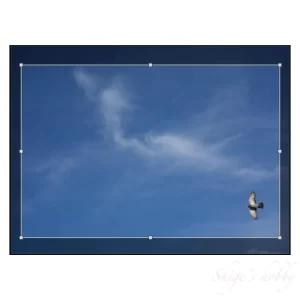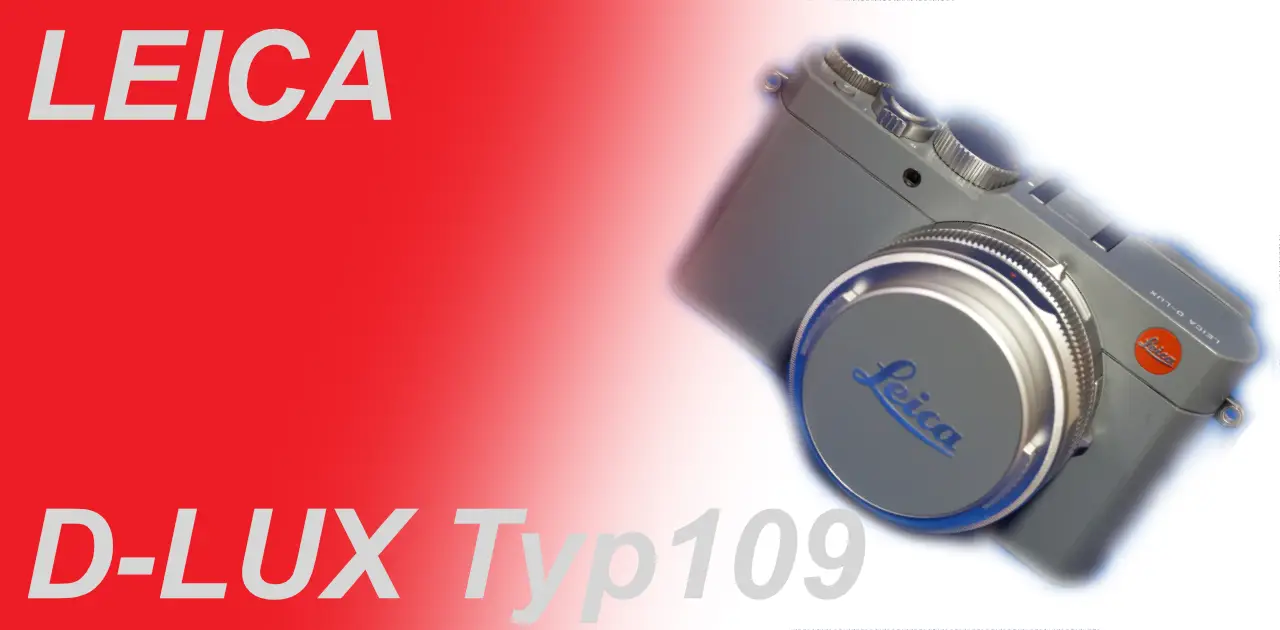Last updated on 2025-10-26
A review and photo examples of the LEICA D-LUX Typ109 Solid Gray.
- Please see the disclaimer regarding advertising here.
- Italicized links in the text are advertisement links that take you to other sites.
Table of contents
Gallery
Review
1.Overview
D-LUX typ109はPanasonic-OEMのコンパクトデジタルカメラで、Panasonic LUMIX DMC-LX100の外装とファームウェThese two sibling cameras are different models.
The main specifications are as follows, with details listed in the table.
- Aperture: F1.7-2.8
- Lens Construction: 9 Elements in 7 Groups
- EVF: OLED, 2.76 Million Dots
- Aperture Blades: 10
- Minimum Focus: 0.7m
- Focusing Distance: 50cm to infinity, with a macro mode that can get as close as 3cm
- Recording Format: JPEG, RAW (RAW format is Panasonic’s RWL format)
- Battery: BP-DC15
- 43mm filter compatible with no optional accessories
- Lens Color Variations: Black, Solid Gray, “Leica D-LUX “RSJ Edition””
This camera was released in black on November 28, 2014, and in solid gray about a year later in December 2015.
Its unique use of the image sensor, similar to the Canon IXY1 and IXY3, involves using a lens with an image circle smaller than the image sensor to record a cropped image.
The image sensor used was a 16-megapixel Four Thirds image sensor, common at the time, but in shooting mode 3:2, it uses 12.2 megapixels (4272 x 2856 pixels).
To achieve this, the lens developed for this camera was the LEICA DC VARIO-SUMMILUX, with an actual focal length of 10.9mm-34mm, F1.7-2.8, and a 3.1x optical zoom, designed to give a 35mm equivalent shooting range of 24-75mm.
To fully utilize the Four Thirds sensor to achieve the same focal length, a lens with an actual focal length of 12mm-37.5mm, F1.7-2.8, would be required, which would be larger than today’s lenses. Therefore, it is thought that the lens size was determined based on the overall size of the camera, and therefore the effective range of the image sensor.
Below is a visual example of the D-LUX typ109’s use of a Four Thirds image sensor.

2.Usability
The D-LUX typ109’s JPG images are well-corrected, with no noticeable distortion. In Raw, distortion is noticeable at some focal lengths.
It covers a range from 24mm to 75mm in 35mm format, making it versatile for landscapes, street photography, and tabletop photography.
It has a fast startup time and almost no wait time for saving, making it a comfortable camera to use.
The autofocus accuracy is average, and with a complex background, the focus may land in an unintended location. Since both the EVF and the rear LCD display a reduced image, it may appear to be in focus, but slight deviations are quite common, so it’s best to zoom in and check the focus for important shots.
The EVF has a decent number of pixels, but the display speed is not particularly fast, and the EVF visibility is not great. Leica seems to be aware of this, as the successor, the D-LUX8, has a faster display speed of 60fps.
The battery is the BP-DC15, and is compatible with Panasonic’s DMW-BLE9 and DMW-BLG10.
The DMW-BLE9 and DMW-BLG10 are used in many Panasonic cameras, including the DMC-GF3, DMC-GF5, DMC-GF6, DMC-GX7 Mark II, DMC-TZ85, DC-TZ90, DMC-GX7MK2, DMC-GX7MK3, DMC-TX1, DC-TX2D, and DC-G100V-K, so there are plenty of compatible batteries available, so you won’t have any trouble finding one.
3.Summary
In conclusion, to sum up the D-LUX typ109 is a built-in lens digital camera that offers excellent image quality thanks to its large sensor size and fast lens.
The D-LUX typ109’s changes from the base Panasonic camera are limited to its appearance, so if you’re looking for a built-in lens digital camera with a stronger Leica feel, the D-LUX8 is likely to provide more satisfaction. More on the D-LUX8 below.
Specifications, considerations, etc.
I know that the solid gray D-LUX typ109 is actually for sale. However, the camera I owned was a bit of a strange camera.
The solid gray body I purchased secondhand had a slightly strange feature: I couldn’t register it even when I entered the serial number into Leica’s product registration system. I haven’t registered a Leica product recently, so I don’t know, but back in 2016, if a used camera had previously been registered, it would display a message saying “This product has already been registered” and could not be registered. However, in the case of this camera, I received a message saying something like “This serial number cannot be recognized as a product.” I was unable to register it. When I contacted Leica about my inability to register the product, they told me that they have no responsibility for products with unregisterable serial numbers. Perhaps a prototype or something had somehow leaked onto the market? I’m not sure if Leica is not properly managing its OEM products, but it’s a strange camera.
I’ve also seen products with a different back exterior than the one I owned, so it’s a camera that I’ve encountered some strange experiences with.
The successor camera, the D-LUX7, was released in 2018 with an improved sensor resolution of 17 megapixels. The camera’s depth was changed from 55mm to 64mm to include the protruding EVF.
The product PDF shows that the EVF’s performance is the same, but the panel has changed from the OLED of the D-LUX typ109 to an LCD on the D-LUX7. This raises questions about the D-LUX typ109’s labeling, as the specifications for the Panasonic DMC-LX100, the camera on which the D-LUX typ109 is based, do not mention OLED, so it is highly likely that the labeling in the D-LUX typ109 PDF is incorrect.
In conclusion, apart from the sensor, the D-LUX7 is almost identical to the D-LUX typ109, and it can be said that it is not a camera that feels like a breakthrough.
The D-LUX8, released in 2024, can be said to be the completed form of the D-LUX, packed with a Four Thirds image sensor.
The camera body design has been completely revamped, and the button layout has also been redesigned.
The biggest change is the revised rear LCD and EVF display. The EVF is a 2.36 million dot OLED screen with a resolution of 60 fps. While the dot count is slightly reduced, it offers improved performance over the D-LUX typ109 and D-LUX7.
And with raw images now saved in DNG, this camera incorporates Leica’s requests to a large extent.
| Items | D-LUX Typ109 | D-LUX7 | D-LUX8 |
| Focal length | 24-75 | ← | ← |
| Max aperture | F1.7~2.8 | ← | ← |
| Number of pixels (mega pixels) | 12.8 | 17 | ← |
| Image sensor | 4/3 | ← | ← |
| View Finder | EVF 276万ドット | ← | OLED-EVF 236万ドット |
| Back LCD | 3.0 92 million dot | 3.0 124 million dot | 3.0 184 million dot |
| Minimum shooting distance (macro mode) | 3cm | ← | ← |
| Battery | BP-DC15 | ← | ← |
| Recorded media | SDXC | SDXC | SDXC |
| Filter Size(mm) | 43 | ← | ← |
| Camera size (mm) (W × H × D) | 118 × 66 × 55 | 118 × 66 × 64 | 130 x 69 x 62 |
| Weight (g) including battery ( ) is for body only | 405 (365) | 403 (361) | 397 (357) |
| Release date | 2014 | 2018 | 2024 |
| Color | Black Gray | Black Silver | Black |
Options
- Leather case/leather protector
- strap
- dedicated bag
- Special grip (#18547)
Reference links
- D-LUX typ109 Solid gray product introduction by Impress digital camera-watch
- DCM-LX100 product introduction by Panasonic official
Affiliate links

Amazon Prime Sale
Update history
- 2024.7.25
- 2024.06.25
- 2023.02.19
- 2022.11.14


